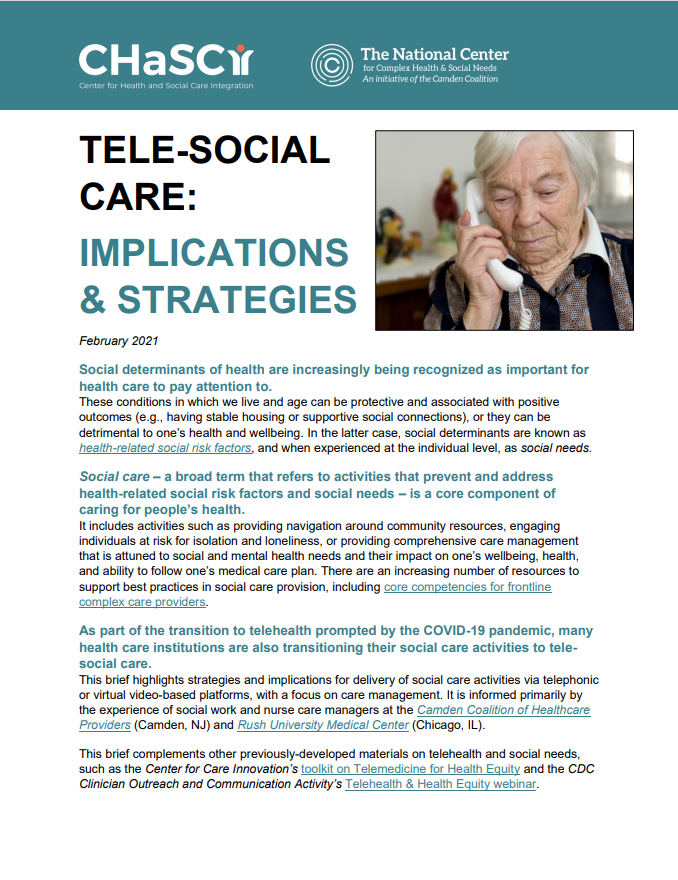Headline
This guide discusses the benefits and challenges of tele-social care and offers practical tips for providers administering telehealth services for social care activities.
Context
Social care, which refers to interventions to prevent and address health-related social risk factors, is critical to addressing health beyond medical care. With the expansion of telehealth services prompted by the COVID-19 pandemic, many providers are transitioning social care activities to be available via virtual visit formats.
About this Tool
This resource shares considerations for social care program planning via telehealth. It includes practical tips for frontline social care providers using telehealth to prepare for successful interactions, learn strategies for effective social care interactions, and leverage follow-up practices in care management. Examples of tips include:
- Identify patients to focus on, such as those who have not recently engaged or are identified as rising risk due to previous diagnoses and social risk.
- Anticipate technology issues by doing a dry run with colleagues and having a back-up plan if the virtual meeting is disrupted by technology challenges.
- Leverage three-way calls with benefits providers, such as Medicare, who typically will not speak to social care providers without client permission.
- Follow up with clients using timely communications in clients’ preferred format.
Takeaways
Providers can use this resource in designing effective strategies to incorporate social care activities into telehealth..



